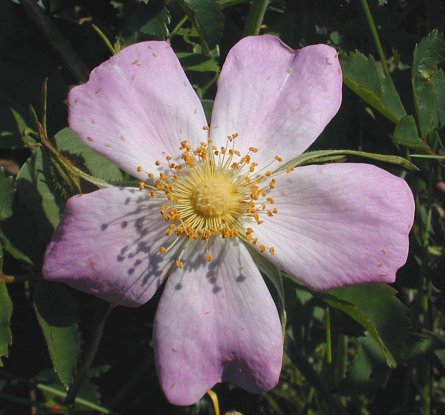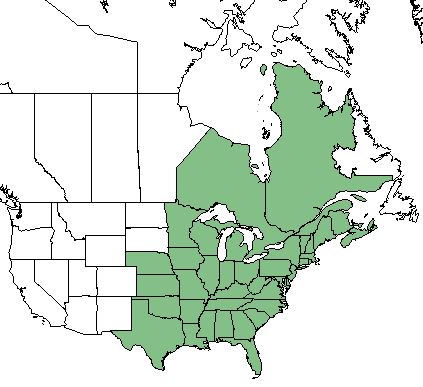Difference between revisions of "Rosa carolina"
(→Description) |
(→Distribution) |
||
| Line 27: | Line 27: | ||
==Distribution== | ==Distribution== | ||
| + | ''Rosa carolina'' is found throughout the entire eastern United States as far west as Texas, as well as, Ontario and Quebec.<ref name= "USDA"> [https://plants.usda.gov/core/profile?symbol=CEAM USDA Plant Database]</ref> | ||
| + | |||
==Ecology== | ==Ecology== | ||
===Habitat=== <!--Natural communities, human disturbed habitats, topography, hydrology, soils, light, fire regime requirements for removal of competition, etc.--> | ===Habitat=== <!--Natural communities, human disturbed habitats, topography, hydrology, soils, light, fire regime requirements for removal of competition, etc.--> | ||
Revision as of 16:58, 29 May 2018
| Rosa carolina | |
|---|---|

| |
| Photo by John Hilty hosted at IllinoisWildflowers.info | |
| Scientific classification | |
| Kingdom: | Plantae |
| Division: | Magnoliophyta - Flowering plants |
| Class: | Magnoliopsida - Dicots |
| Order: | Rosales |
| Family: | Rosaceae |
| Genus: | Rosa |
| Species: | R. carolina |
| Binomial name | |
| Rosa carolina L. | |

| |
| Natural range of Rosa carolina from USDA NRCS Plants Database. | |
Contents
Taxonomic Notes
Synonym: R. carolina var. villosa (Rehder), R. lyoni (Pursh), R. serrulata (Rafinesque)
Variety: Rosa subserrulata (Rydberg)
Description
R. carolina is a perennial subshrub of the Rosaceae family that is native to North America.[1]
Distribution
Rosa carolina is found throughout the entire eastern United States as far west as Texas, as well as, Ontario and Quebec.[1]